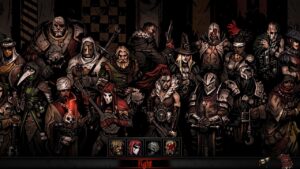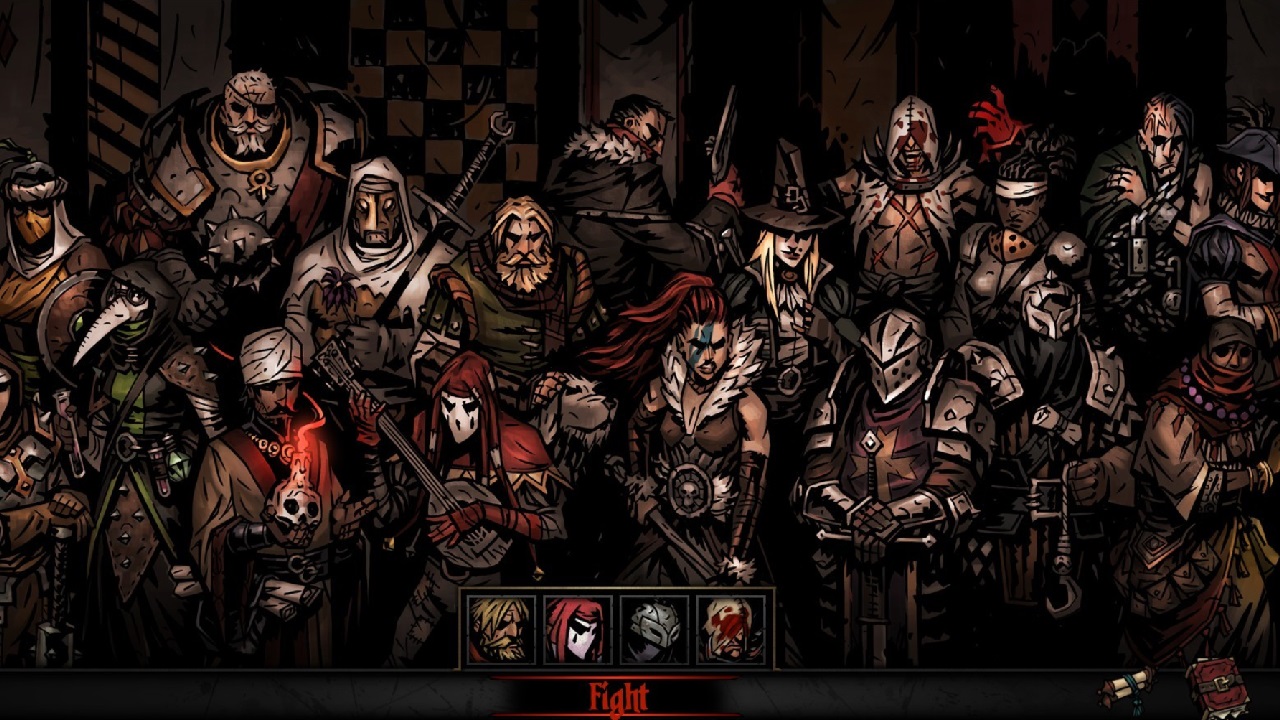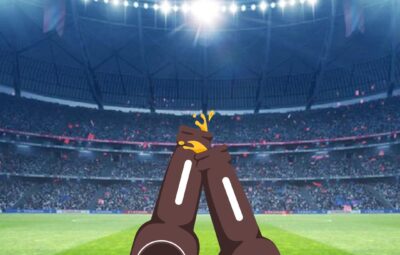
“Ruin has come to our family.” Those words, written by an estranged member of your esteemed house, open up one of the most challenging and gorgeous games of the past decade. “Darkest Dungeon” is an unforgiving test of the player’s ability to make the best out of bad situations.
As I said, ruin has come to your family. The player receives a mysterious letter written by one of the last surviving members of your family. You embark on an ill-fated trip to the ancient home of your ancestors to find exactly what ruin has come to your home, and quite a lot of it has come to roost here. Everything from simple bandits to cultists to whatever unholy nightmare dwells in numerous tombs and caverns dotting the landscape. With the help of fortune seekers and wayward souls drawn to the stories of ancient truth and endless riches, you will smite these filths from your home and find the dark secrets dwelling in the depths of the manor.
After listening to the harrowing words of your ancestor, “Darkest Dungeon” makes sure you’re aware of what you’re getting yourself into. I wasn’t kidding when I said this game is about making the best of a bad situation. The first bit of text of the game explains exactly that. The player should expect to be playing from the back foot most of the game and should have contingencies planned for everything that could go wrong.
This sounds off-putting for new players, but rest assured that the game won’t demolish your sense of self-worth right away. The game starts out very forgiving. The player receives two heroes. You move your party through the world by interacting with a maze of a map for each area and can choose to interact with a number of chests and traps to give your party buffs items and other important goodies. It’s incredibly important for players to manage the light level by keeping a hearty stock of torches. The game will become much more difficult if your party cannot see what lies in the dark.
Combat is essentially a turn-based strategy with a few extra bells and whistles. When a hero is reduced to zero health, they will enter death’s door. As long as they can be healed, they’ll be fine. If you fail to heal them and they take too much damage, your hero will die. Permanently. Yup, this is one of those games.
In addition to turn order, your party is also organized in place order as well. If you have a knight at the very front then he can only hit the first one or two enemies. If there’s someone who can throw objects or use firearms, then they’ll usually have the reach to hit the backline of enemy groups. The caveat to this is that abilities also have a usable range as well. Stick that knight in the back and he’ll be pretty much useless.
Each new hero that arrives has a mix from a pool of different abilities. Two knights could play entirely different from each other with one being able to dish out large amounts of damage while the other focuses on debuffs and crowd control. While this makes for interesting and diverse team compositions, it also forces players to think on their feet about what their teams are capable of.
Heroes also have a second health bar, the stress bar, that is equally important. Stress goes up depending on a number of things. Low light levels often generate a bit of stress, and a number of enemy attacks and unsightly appearances can quickly fill the stress meter. When stress maxes out for the first time, the hero’s will is tested, and either they become empowered and can lower the stress of the rest of the party, or they fall into despair and begin wrecking all the best-laid plans.
It’s never a good sign when the backline healer develops a masochism streak. If they fall into despair, the stress meter continues filling. If the meter fills again, the hero has a heart attack and is immediately put on death’s door. All of these intricate design choices mixed in with the usual grab bag of poisons, bleeds, taunts and shields make combat always something the player has to focus their attention on. One wrong step and your whole party will be lost to the dungeon.
The combat may not sell people on the game and rightly so. The art and design of “Darkest Dungeon” are what sucked me in. If “Bloodborne” contains a piece of Lovecraft’s soul, then one of his descendants probably made this game. Every aspect of both gameplay and lore is designed to echo the fatalistic pessimism of Lovecraft’s stories, sans his crippling fear of foreigners, other races, other bloodlines and women.
The game is built on the futile struggle of man against unseen monstrous forces while the world around you decays further into ruin. The people who work for you are pretty much destined to die horribly, and I’ll just say that the ending definitely lives up to the name H.P. Lovecraft. Your ancestor is also the narrator of the story, and his gravelly voice combined with the tragically verbose language makes each and every line memorable.
“Darkest Dungeon” is one of those games you don’t beat in one sitting. It takes time to weather away at the numerous dangers waiting for you, but the atmosphere of the game and the polished manner in which it conducts itself makes up for the game’s shortcomings. You can find the game and all of the DLC for about $40 on Steam, but I’d recommend buying the base game first to make sure you don’t waste your money.
“Darkest Dungeon” isn’t for everyone, but it’s worth giving a try.







